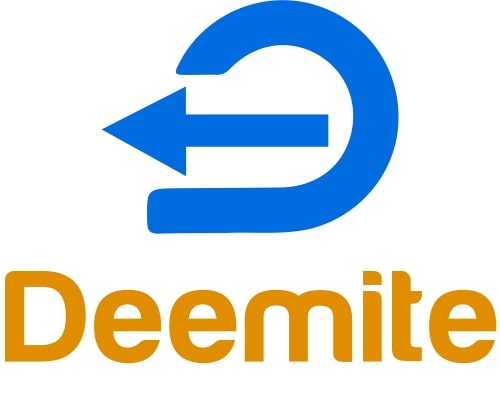A self hosted WordPress site empowers website owners with full control over their online presence, offering unparalleled flexibility, customization options, and the ability to monetize their efforts without limitations.
In this blog, we’ll learn what is a self hosted WordPress site, the benefits of a self-hosted WordPress website, and how to get started with self-hosting your WordPress website.
What is a Self Hosted WordPress Site?
A self-hosted WordPress site refers to a website that runs the WordPress CMS on a web server that you personally own or lease, rather than using WordPress.com’s hosting service.
In other words, you install and manage the WordPress CMS on your own hosting server or with a third-party hosting provider.
The Benefits of Self-Hosted WordPress
There are multiple benefits of hosting your website on your own server or with a third-party hosting service. Let’s discuss them.
1. Complete Control and Flexibility over Your Website
Self-hosted WordPress sites offer boundless creative freedom. You have access to the website’s code, enabling you to customize and modify every aspect as per your needs and preferences.
2. Access to a Vast Library of Plugins and Themes
The WordPress ecosystem boasts an extensive array of plugins and themes. With self-hosted WordPress, you can use these plugins and themes to add features, functionality, and aesthetic elements to your site.
3. Freely Monetize Your Website
Self-hosted WordPress allows you to explore various monetization options, including advertisements, affiliate marketing, and eCommerce, without restrictions imposed by WordPress.com’s terms of service.
4. Enhanced SEO and Branding Opportunities
Self-hosted websites have more control over SEO techniques, optimizing their content and meta tags to improve search engine rankings.
Additionally, the absence of platform branding ensures that your site’s focus remains on your brand identity.
How to Get Started with a Self-Hosted WordPress?
We have outlined some steps to get started with self hosted WordPress website.
1. Choose the Right Web Hosting Provider
Research and select a reliable web hosting provider that aligns with your website’s requirements and budget. Factors to consider include server performance, customer support, and pricing.
Some of the popular hostings include Cloudways, Siteground, and Hostinger.
2. Register a Domain Name
Choose a domain registrar like GoDaddy or Namecheap and secure a unique and relevant domain name that reflects your website’s purpose and aligns with your brand.
3. Install WordPress on Your Server
Many hosting providers offer one-click installations of WordPress, making the setup process straightforward.
Follow the instructions provided by your host to complete the installation.
Configure Basic Settings and Security Measures
Once WordPress is installed, customize essential settings such as site title, tagline, and permalink structure. Implement security measures like strong passwords and two-factor authentication to safeguard your website.
How to Customize and Design WordPress Website?
1. Explore WordPress Themes
Browse the vast collection of free and premium themes available on WordPress to find one that resonates with your website’s style and purpose.
2. Select a Suitable Theme
Choose a theme that complements your content and aligns with your website’s goals. Consider factors such as responsiveness, customization options, and performance.
3. Customize Themes to Match Your Branding
Personalize your chosen theme by adding your logo, brand colors, and other design elements to create a cohesive and memorable user experience.
How to Add Functionality to WordPress Website with Plugins
1. What are WordPress Plugins
Plugins are add-ons that enhance your website’s functionality. Explore the WordPress plugin repository and third-party sources to find plugins that meet your specific needs.
2. Essential Plugins for Various Types of Websites
Depending on your website’s purpose, consider installing essential plugins like Yoast SEO for search engine optimization, Akismet for spam protection, and Contact Form 7 for form building like contact forms for easy communication with your audience.
3. How to Choose Reliable and Compatible Plugins
Check plugin reviews, ratings, and compatibility with your WordPress version before installing them. Regularly update plugins to ensure security and optimal performance.
The Responsibility of Self-Hosting Website
While self hosted WordPress site offers complete control over your website, it also comes with numerous responsibilities.
Let’s discuss them!
1. Do Regular Backups
Back up your website regularly to protect against data loss due to unforeseen circumstances or security breaches.
2. Take Care of Website Security
Install security plugins, use strong passwords, and keep your WordPress version, themes, and plugins up to date to prevent vulnerabilities.
3. Keep Your Website Up-to-Date
Stay vigilant about WordPress core updates, theme updates, and plugin updates to ensure smooth functioning and enhanced security.
How to Fix Common Issues with Self Hosted WordPress Websites?
1. Identify and Fixing Plugin Conflicts
Incompatible plugins can cause issues on your website. Troubleshoot problems by deactivating plugins and identifying the source of the conflict.
2. Handle WordPress Errors
Learn how to identify and resolve common WordPress errors using online resources and support communities.
3. Utilize Online Resources and Support Communities
Make the most of the vast WordPress community to seek advice, share knowledge, and find solutions to challenges you encounter.
Conclusion
When you embark on a self-hosted WordPress journey, you open up a whole new world of possibilities for your website. With ultimate control, flexibility, and customization, you can shape your online presence exactly how you envision it.
This is an opportunity to create a unique and impactful digital space that truly represents you. Embrace the responsibilities that come with independence and take charge of your website today.
